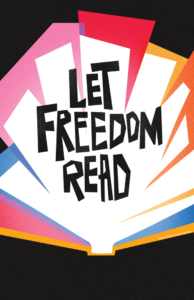 Drat. I was so busy writing about my visit to South Dakota and about Hurricane Helene that I let Banned Books Week, celebrated this year from September 22-28, slip right by me. Oftentimes, I choose a book or two off the list to read and write about. Oops. Not this year.
Drat. I was so busy writing about my visit to South Dakota and about Hurricane Helene that I let Banned Books Week, celebrated this year from September 22-28, slip right by me. Oftentimes, I choose a book or two off the list to read and write about. Oops. Not this year.
Let’s talk instead about cursive handwriting. On social media and elsewhere, educational traditionalists continue to complain that it’s rarely taught anymore. They contend that if students print words rather than connect loopy letters together in a manner that prohibits lifting the pen from the paper, the downfall of western civilization will almost surely follow. I’ve written columns about cursive in years past and won’t say more except that I believe such an outcry is much ado about nothing.
I wish we’d get upset about stuff that really matters.
Starting, perhaps, with the use of “u” for the word “you” and “r” for the word “are” and on and on and on. I see this most often in texts, but I dread the day it shows up in real writing.
Or I could write about the vast number of folks—adults as well as children—who don’t know the difference between “to,” “two” and “too.” Or “their,” “there” and “they’re.” Or “your” and “you’re.” Or “wandering” and “wondering.” (A huge percentage of the lost dog/found dog notices on social media say “This dog has been wondering in my neighborhood.” I have to sit on both hands to keep from replying “What’s he wondering about?”) And don’t even get me started with “where’s it at?” and “has went.”
These mistakes cause me to sigh deeply and shake my head in despair.
But back to book banning. First, I’ll point out that challenging a book and banning a book are different things. A “challenge” is a formal attempt to remove a book from a public library or from a public school library or classroom. A “ban” is the actual removal of that book. Many more books are challenged than banned. But in 2023, the number of “objectionable” books formally challenged increased 65 percent above the previous year. You read that right. Sixty-five percent! According to the American Library Association, last year in the United States 4,240 books were targeted for censorship in our public libraries and schools.
No matter how you slice it, that’s a frightening and outrageous number.
Some of the books were challenged for violence, profanity and/or sexual content. As usual, almost half the challenged titles deal with the voices and experiences of those in the LGBTQ or BIPOC (Black, Indigenous and People of Color) communities.
How do teachers and librarians respond to such challenges? Thankfully, most don’t cave into the book banners’ demands. But a few educational professionals I’ve talked with say the hassle just isn’t worth it. Some have gone so far as to remove all books that aren’t included in the formal curriculum from their classroom shelves, even books that seem absolutely benign. Because in this day and age, when extremist groups like Moms for Liberty don’t want their kids—or anybody else’s kids—exposed to controversial or uncomfortable ideas, almost every book out there has something “wrong” with it.
Perhaps that’s one reason many college students don’t read books anymore. In an article entitled “The Elite College Students Who Can’t Read Books” in the November 2024 issue of The Atlantic, author Rose Horowitch writes that—even at highly selective colleges—many students are unprepared to read even one book in its entirety, let alone multiple books. They don’t know how, she writes. Could that be because they never read entire books before they got to college? I can’t help but wonder if their teachers feared trouble if they taught controversial books and thus gave up requiring students to read books at all.
If that’s so, we have a lot more to worry about than cursive handwriting.
(October 12, 2024)